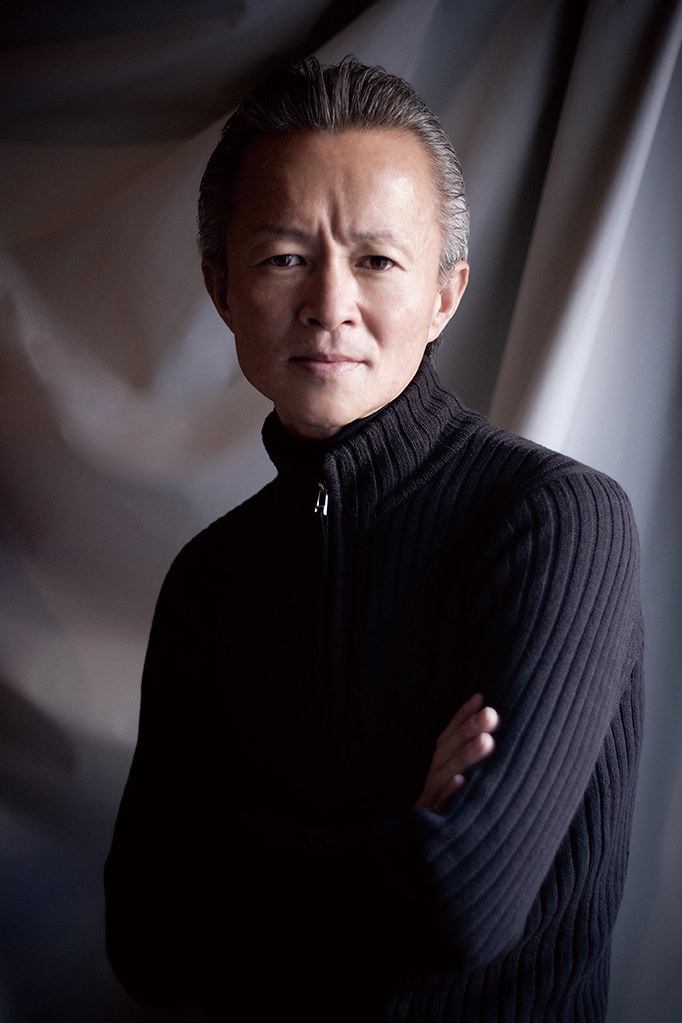
Chicara Nagata, motorbike builder extraordinaire
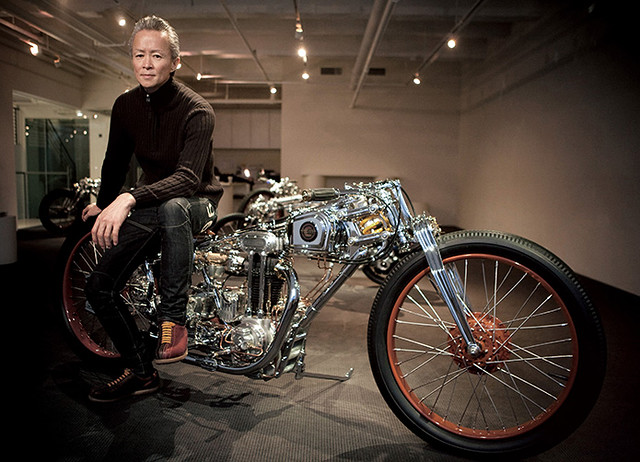
Chicara with one of his mean machines
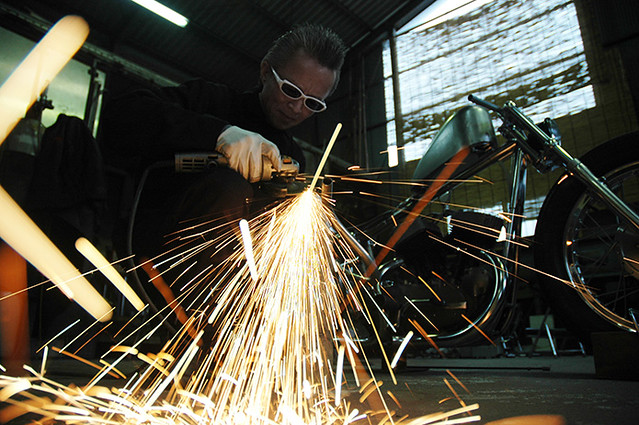
Chicara at work
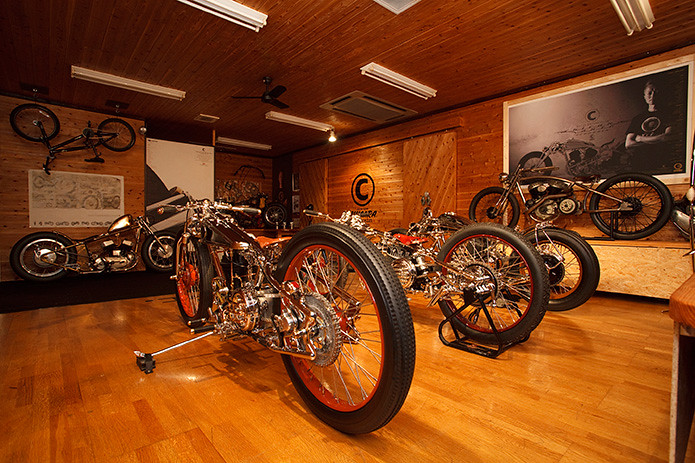
This is what I call a motorbike showroom!
TO REFER TO CHICARA NAGATA'S MOTORBIKES AS A MEANS OF TRANSPORT IS LIKE CALLING ME, KEE HUA CHEE, A FREELANCE WRITER!
Of course a motorbike gets you from A to B and you do ride the machine. As for me, I write and you read. But I am a sublime writer the same way Chicara Nagata is a motorbike builder!
You can buy a garden variety Honda Cub or read articles written by non-Kee Hua Chee or you go for the super best.
And so, riding a Chicara is like reading a Kee Hua Chee article. Enuf said!
Mind you, Chicara's mobile works of art cost and arm and leg at RM 1.11 million for the top hot rods and RM 240,000 for the cheapest 2-wheelers!
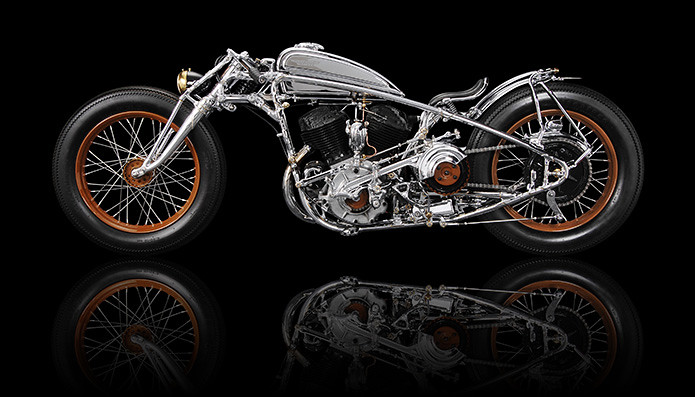
The Chicara Art 1 at RM 1.11 million
CHICARA ART I - 2006
Ø Engine: 1939 U-Motor Harley Davidson – 1200cc
Ø Flathead 4.5 V-Twin
Ø Gears: 3 speeds
Ø Engine Sprocket by Bob Newby Racing
Ø Transmission Sprock: 1950 Triumph
Ø Suspension: Chicara’s suspension system
Ø Controls: made by ©Chicara Motorcycles
Ø Design and Craft: made by ©Chicara nagata
Ø Price: CHF 370’000 + VAT

Front view

Chicara Art 3; also RM 1.11 million
CHICARA ART III- 2008
Ø Engine: 1950 Meguro Racing Motor- 28ph
Ø Flathead 4.5 V-Twin
Ø Engine Sprocket by Bob Newby Racing
Ø Transmission Gear Box: 1950 Triumph
Ø Controls: made by ©Chicara Motorcycles
Ø Suspension: Chicara’s suspension system
Ø Design and Craft: made by ©Chicara nagata
Ø Price: CHF 370’000 + VAT
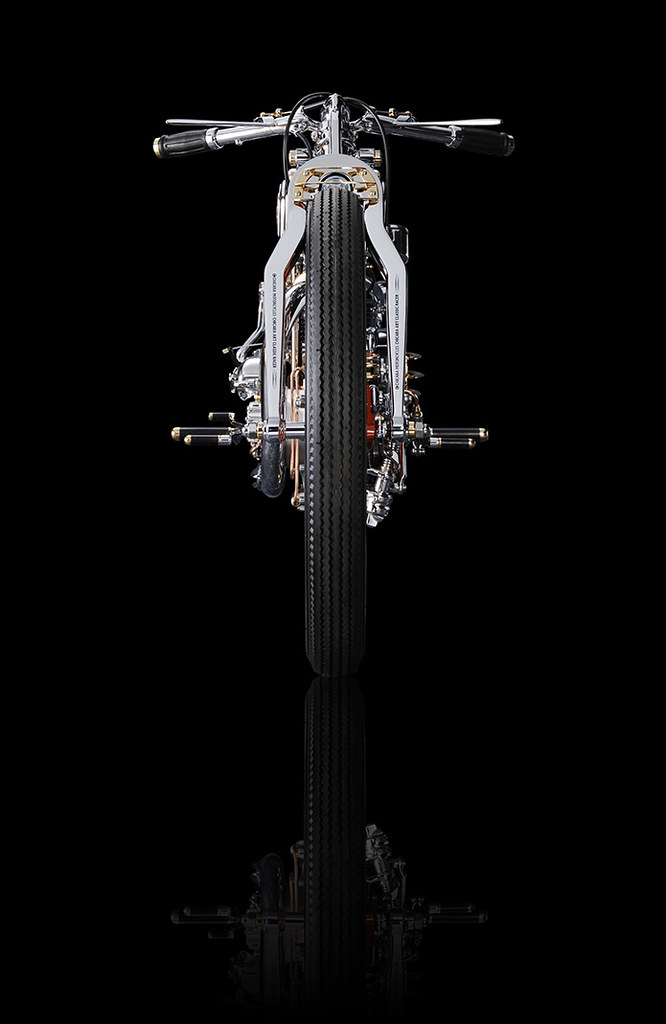
Front view
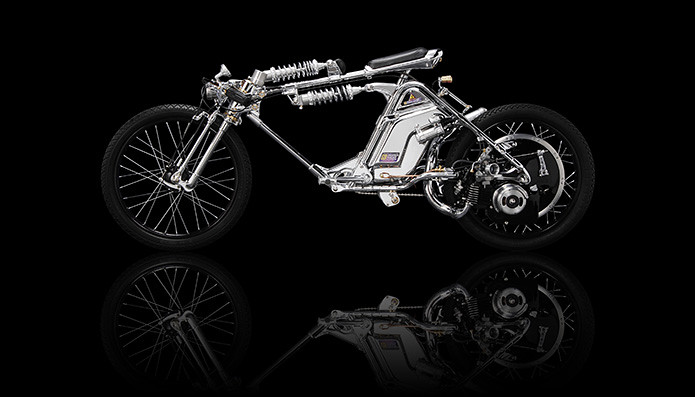
Chicara Art IV; only RM 240,000
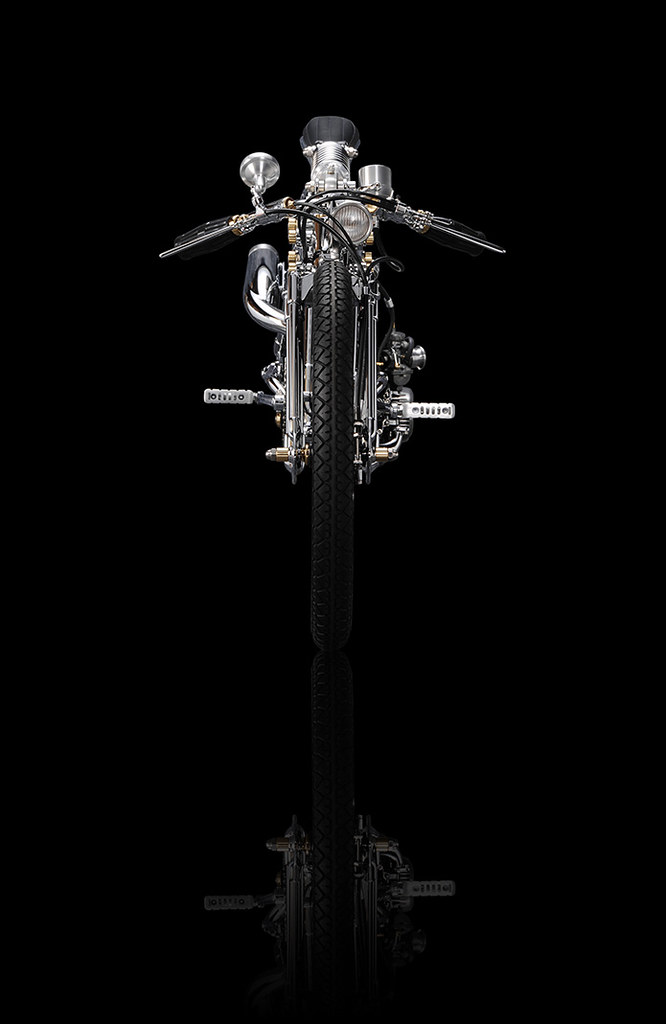
Front view of Chicara Art IV
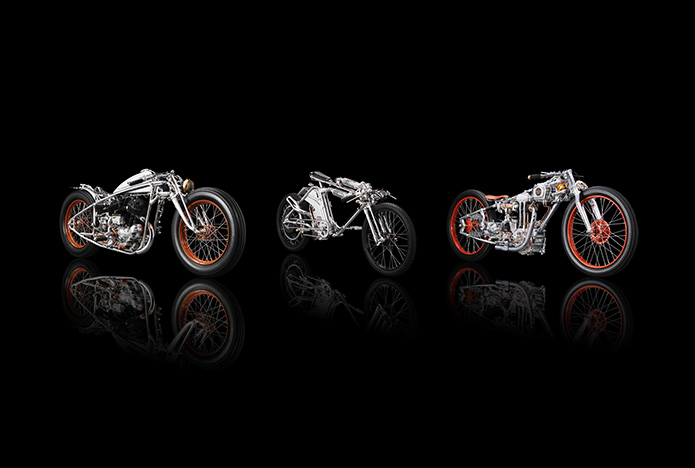
These bikes are meant to melt the tar
BELOW ARE THE BLUEPRINTS IN CASE YOU WISH TO BUILD ONE YOURSELF
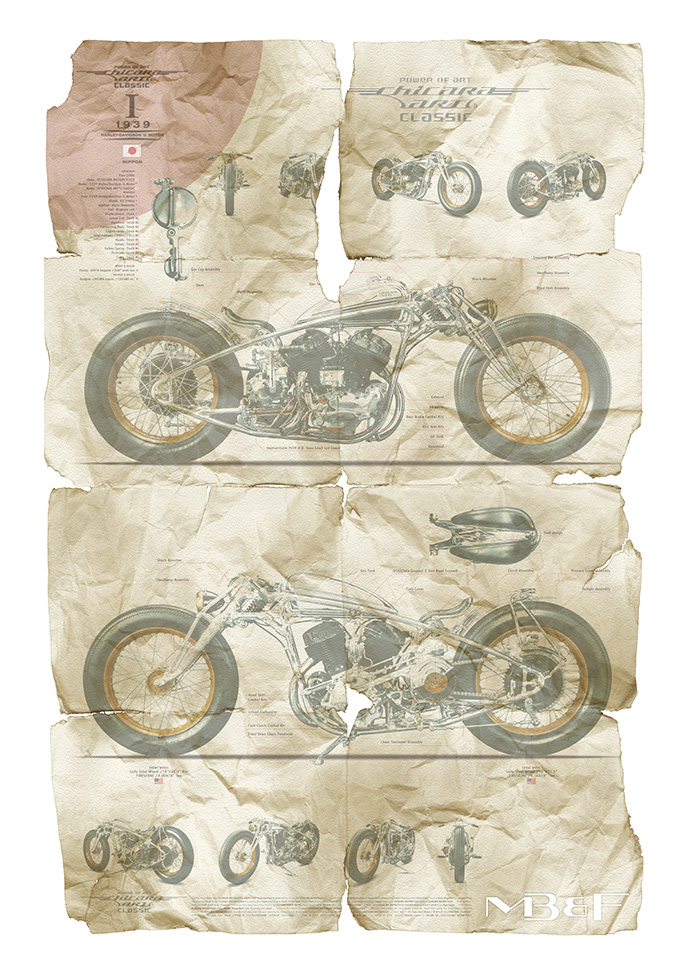
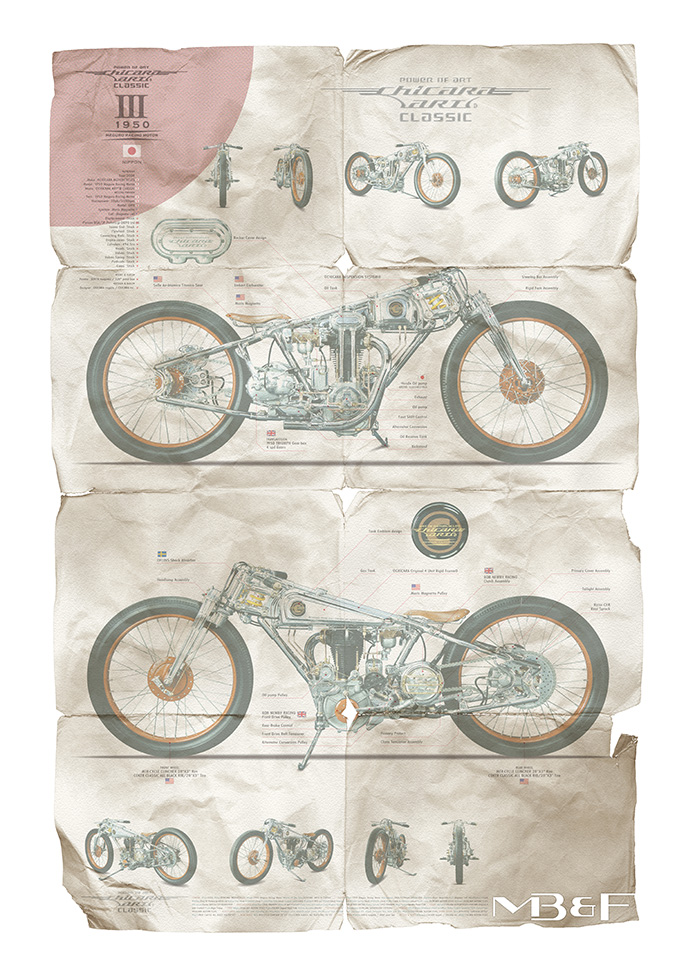


Chicara Art IV; only RM 240,000
CHICARA ART IV- 2008
Ø Engine: 1966 Honda Moped Motor- 1.5ph
Ø Flathead 4.5 V-Twin
Ø Gears: 1 Speed
Ø Engine Sprocket by Bob Newby Racing
Ø Transmission Sprock: 1950 Triumph
Ø Controls: made by ©Chicara Motorcycles
Ø Suspension: Chicara’s suspension system
Ø Design and Craft: made by ©Chicara nagata
Ø Price: CHF 78’000 + VAT

Front view of Chicara Art IV

These bikes are meant to melt the tar
BELOW ARE THE BLUEPRINTS IN CASE YOU WISH TO BUILD ONE YOURSELF



“Chicara Art” by Chicara Nagata at the MB&F M.A.D.
Gallery
The M.A.D. Gallery
is very proud to showcase three extraordinary “road machines” created by the
talented Japanese artist Chicara Nagata.
Chicara’s
motorcycles are like no other. You could ride them; they could perform on the
road; but these stunning works of art are much more than simple modes of
transport. They are the result of Chicara’s wild imagination, combined with
thousands of hours of meticulous craftsmanship carried out by hand.
“The engine is the basis,” says Chicara. “To
decide the style of a bike, I start with the engine. I choose an engine and
then use the details of the engine to find a style that matches.”
Chicara takes
a vintage engine which he beautifully finishes and blends with as many as 500
components he manufactures himself; hand-crafted from steel, aluminium, chrome,
brass and copper. The combination of the classic engine with his distinctively-styled
frames, drive trains, suspension systems and steering components give rise to
creations that could be described as retro-futuristic or even near-futuristic.
“I do not use any so-called machine tools,
any big ones,” he says. “Everything is done with hand tools, little by little. I have an
assistant who works under my direction, so two of us do the work, but each bike
still takes between 7,000 and 8,000 hours to complete.”
As a graphic designer
by training, Chicara feels this profession ties in neatly with his passion for
creating motorcycles.
“Being a designer sometimes influences how I build
motorbikes and sometimes building motorbikes influences how I do graphic
design,” he says. “The two have a very good mutual
relationship.”
“In graphic design, idea and hints – an opening for
something new – are the most important parts of the job. How you see things and
express them is the interesting part. It’s not just making something, it is
realising that when I build a motorbike, I use an idea that no one has had
before.”
Chicara Nagata – Background
Chicara Nagata
was born in 1962 in the Saga Prefecture of Kyushu Island, 18 hours away from
Tokyo, Japan. At the age of 20 he became a graphic designer; a decade later he set
up Chicara, Inc. graphic design agency in Saga.
“When I was a teenager, I spent all my time gazing at
my older friends’ motorcycles and wanted to ride one myself,” he says. “What I really wanted was to ride a motorcycle that was all my own.
That was what gave me the idea to build custom bikes.”
Chicara’s
ambition to design and build his own machines was almost ruined when he was
involved in a near-fatal motorcycle accident at the age of 16. “I was told that I would not survive, but
here I am still alive today,” he says, talking about an event that turned
out to be life-affirming.
Paradoxically,
he decided to dedicate his life to an engine that almost killed him. His art
is, according to him, an expression of gratefulness to the people who donated
their blood and worked to save his life… his way to give back to society: “That got me thinking about how I could show
the world that I was alive and well. I realised that making things I was good
at – building a motorcycle that means so much to me – was the way I could do
so.”
Chicara started creating custom motorcycles
in 1993. In 2004 he took his passion one
step further, elevating his work to what can be considered an art form. That
marked the beginning of his “Chicara Art” series, which rapidly won 6
consecutive awards at shows in Belgium, Germany and France, before garnering
global recognition at the AMD Championships (the most recognized custom bike award
worldwide) where he took first place for Chicara Art One in 2006 and second
place the following year for Chicara Art Two, both in the freestyle class.
Chicara has
since gone on to create Chicara Art Three and Chicara Art Four and he is currently
working on Chicara Art Five. “I need new
challenges,” he says. “If at all
possible, I want to keep making a new work of art each year.”
No comments:
Post a Comment